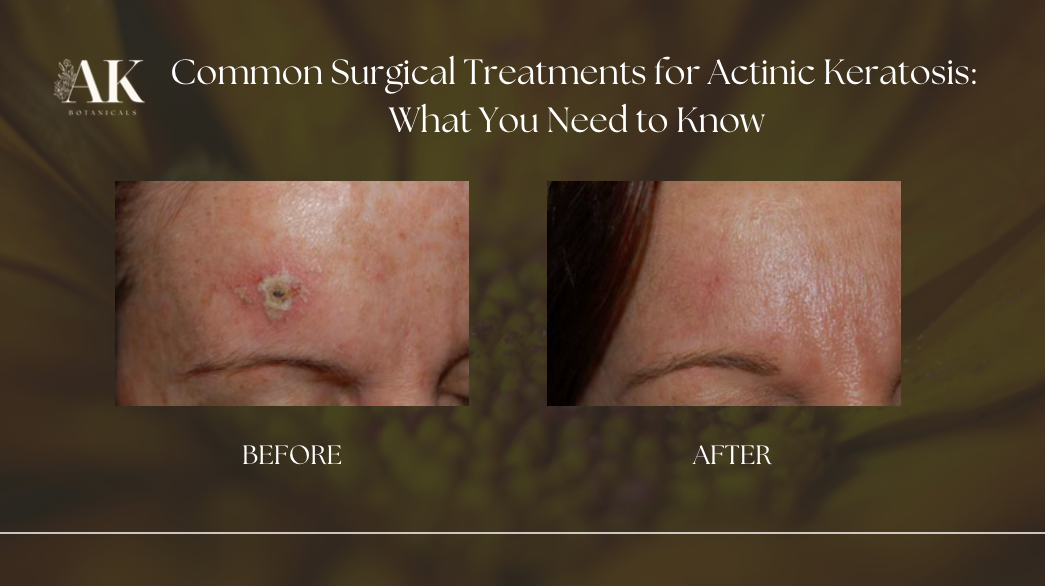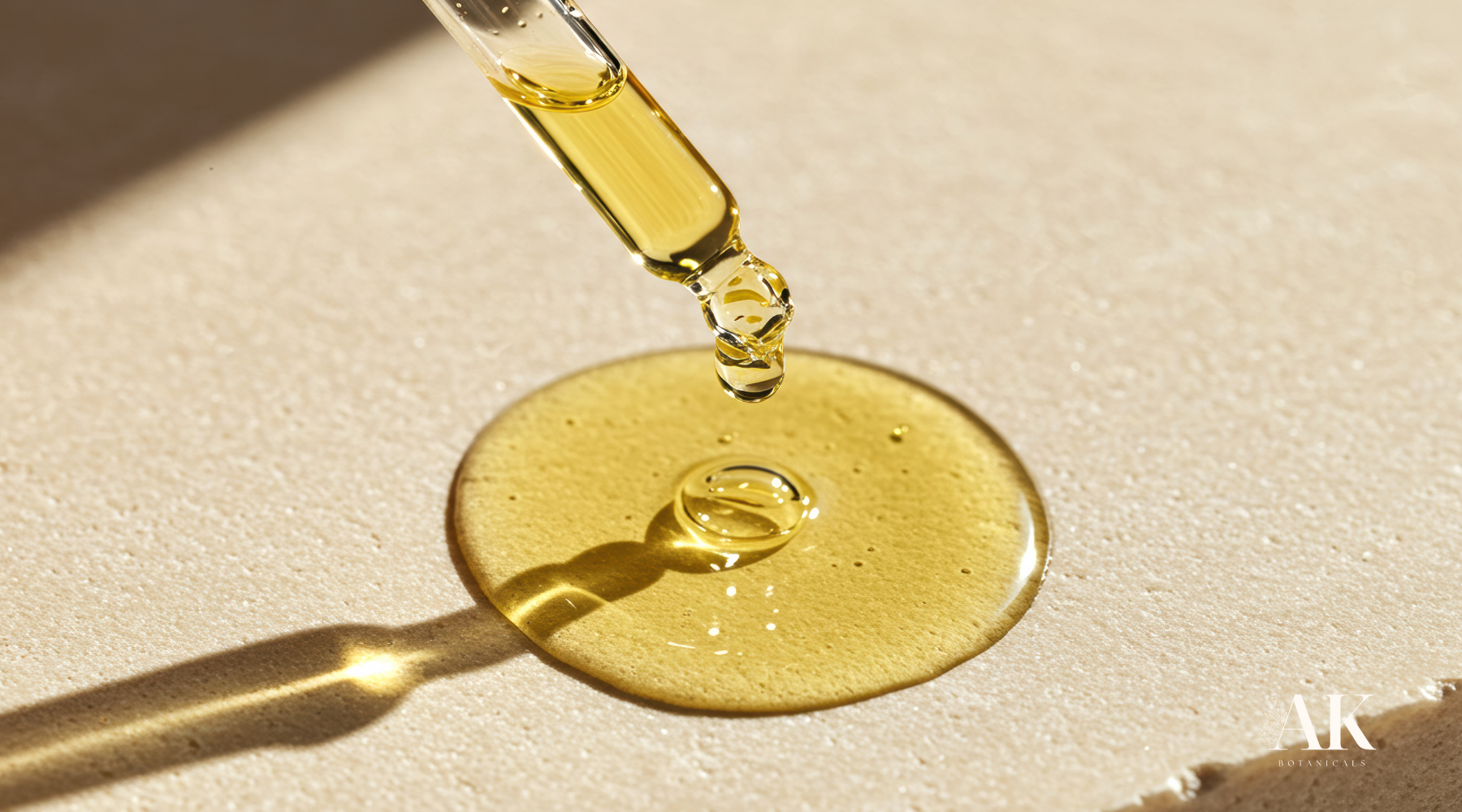
Common Surgical Treatments for Actinic Keratosis: What You Need to Know
When it comes to the health of your skin, taking a proactive and holistic approach is essential, especially when dealing with conditions like actinic keratosis (AK). Rooted in the belief that the body’s natural balance can be restored, many seek treatments that align with this philosophy. But, for those facing the challenges of AK, understanding the available treatment options—both traditional and natural—is crucial for making informed decisions about their skin health.
The Role of Medicine in Treating Actinic Keratosis
While AK is not immediately dangerous, it can be unsightly and a cause for concern. It could potentially develop into squamous cell carcinoma if left untreated, making early detection and treatment critical.
Medical treatments for actinic keratosis often involve a combination of topical medications and procedural interventions. Topical treatments, such as fluorouracil (5-FU) and imiquimod, are commonly prescribed to target abnormal cells. These medications work by triggering an immune response that attacks the damaged skin cells, leading to the gradual clearance of lesions. Ingenol mebutate and diclofenac gel are other topical options that have shown effectiveness in treating AK.
In more severe cases or when topical treatments are insufficient, procedural options like cryotherapy, curettage, and photodynamic therapy (PDT) may be recommended. Cryotherapy involves freezing the lesions with liquid nitrogen, effectively destroying abnormal cells, while curettage uses a specialized tool to scrape away the keratosis, sometimes followed by electrosurgery. PDT combines a light-sensitizing agent with targeted light exposure to destroy abnormal cells with minimal damage to surrounding tissue.
The role of medicine in treating actinic keratosis is vital not only for managing current lesions but also for preventing the progression to skin cancer.
Assessing the Risks
Each surgical option for actinic keratosis comes with potential risks. Common concerns include:
-
Scarring: Surgical interventions often result in permanent scarring, which may vary in severity.
-
Infection: Any surgical procedure involves the risk of infection, necessitating careful post-treatment care.
- Skin Color Changes: Procedures like cryotherapy and laser surgery can lead to noticeable changes in skin pigmentation, which may not always be reversible.
It’s crucial to have a detailed discussion with your dermatologist to weigh these risks against the benefits and to determine the most suitable treatment plan for your specific needs.
Common Procedures for Treating Actinic Keratosis
There are several common procedures used to treat actinic keratosis (AK), each designed to target and remove these pre-cancerous lesions.
One of the most commonly used procedures is cryotherapy, which involves freezing the affected area with liquid nitrogen. This quick and relatively simple treatment destroys the abnormal cells by freezing them, causing the lesion to blister and eventually fall off. Cryotherapy is particularly effective for smaller lesions and is often done in a single session, though it may cause temporary side effects like redness, blistering, and changes in skin pigmentation.
Another widely used procedure is curettage, where a dermatologist scrapes away the keratosis using a specialized tool. This method is sometimes followed by electrosurgery, where an electric current is used to burn off any remaining abnormal cells. Curettage is often recommended for thicker, more stubborn patches of AK. While effective, it can result in scarring and changes in skin color.
Laser surgery is another option, using concentrated light beams to precisely remove damaged skin cells. This technique is highly effective, especially for larger or widespread lesions. However, it does carry some risks, such as scarring, infection, and alterations in skin texture and tone, and may require multiple sessions depending on the extent of the damage.
Photodynamic therapy (PDT) is a less invasive procedure that combines a light-sensitizing agent with targeted light exposure to destroy abnormal cells. PDT is often chosen for patients who prefer a non-surgical option, as it involves minimal discomfort and downtime. However, it can cause temporary side effects like redness, swelling, and increased sensitivity to sunlight following the treatment.
These common procedures for treating actinic keratosis are effective in preventing the progression to skin cancer and are typically well-tolerated by patients. The choice of procedure will depend on the size, location, and number of lesions, as well as the patient’s overall health and preferences.
Surgical Therapies for Managing Actinic Keratosis
When it comes to managing actinic keratosis, surgical therapies play a critical role, especially for more extensive or resistant lesions. Surgical treatments are often recommended when other methods, such as topical medications or less invasive procedures, are not sufficient.
One of the primary surgical therapies used for AK is excisional surgery, where the lesion is cut out of the skin along with a small margin of surrounding healthy tissue. This method ensures that all abnormal cells are removed, making it a highly effective option for lesions that are at high risk of developing into squamous cell carcinoma. The excised tissue is typically sent for pathological examination to confirm that all cancerous cells have been removed. While excisional surgery is highly effective, it does result in a scar, which may vary in size depending on the extent of the lesion.
Another surgical option is curettage and electrosurgery, which, as mentioned earlier, involves scraping away the lesion followed by the use of an electric current to destroy any remaining abnormal cells. This method is often used for thicker lesions and can be particularly useful when the lesion is located in a cosmetically sensitive area where minimizing scarring is important.
Shave excision is a less invasive surgical technique where the lesion is shaved off the surface of the skin with a scalpel. This procedure is typically used for superficial lesions and is followed by cauterization or application of a chemical to stop bleeding and help heal the wound. Shave excision usually results in minimal scarring and is a good option for patients with multiple lesions in a concentrated area.
In cases where multiple lesions are present, or when the patient has a history of skin cancer, a combination of surgical therapies and other treatments, such as cryotherapy or photodynamic therapy, may be recommended to ensure comprehensive management of the condition.
Surgical therapies are a cornerstone in the management of actinic keratosis, particularly for lesions that are difficult to treat or have a higher risk of progressing to skin cancer. Consulting with a dermatologist to determine the most appropriate surgical option is essential for achieving the best outcomes while minimizing potential complications.
Surgical Treatments for Actinic Keratosis: What to Expect
When it comes to addressing actinic keratosis, several surgical methods are available. Each option has its own set of benefits and considerations, which we’ll explore below:
-
Cryotherapy: Involves freezing the affected skin area with liquid nitrogen to destroy abnormal cells. While effective, it can result in side effects such as scarring, blistering, and changes in skin pigmentation. This method is often recommended for smaller lesions.
-
Curettage: Scrapes away the keratosis using a specialized tool, sometimes followed by electrosurgery to burn off any remaining abnormal cells. This method is particularly suited for thicker patches but may lead to scarring and changes in skin color.
-
Laser Surgery: Uses concentrated light to precisely remove damaged skin cells. This technique is highly effective, especially for larger or widespread lesions, but carries risks such as scarring, infection, and alterations in skin texture and tone.
-
Photodynamic Therapy (PDT): Combines a light-sensitizing agent with targeted light exposure to destroy abnormal cells. While less invasive than other surgical methods, PDT can cause redness, swelling, and increased sensitivity to sunlight.
AKti-Clear: A Botanically Infused Topical Solution
AKti-Clear is for use on non-melanoma skin lesions and abnormal skin growths caused by sun damage. It is the only solution for use at home, requiring just three applications.
AKti-Clear is:
- Convenient: The only at-home solution for use on actinic keratosis and abnormal skin lesions.
-
Affordable: AKti-Clear offers a cost-effective solution, making it more accessible.
What to Know Before Choosing AKti-Clear
While AKti-Clear presents a promising alternative solution, it’s essential to consult with a dermatologist. Understanding the severity of your actinic keratosis and discussing all available options will help ensure that you choose the most effective and safe approach for your skin’s health.
When it comes to dealing with actinic keratosis, what you need to know is that you have options. Whether you opt for surgical treatments or a Botanically Infused solution like AKti-Clear, the key is to address the condition early and work closely with your healthcare provider to find the best option for your skin. Prioritizing your skin’s health today can prevent more serious issues in the future.
Regular check-ups with a dermatologist and adherence to prescribed treatments are essential components of effective management.




